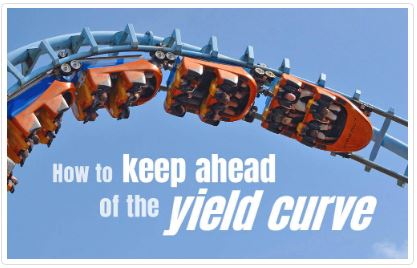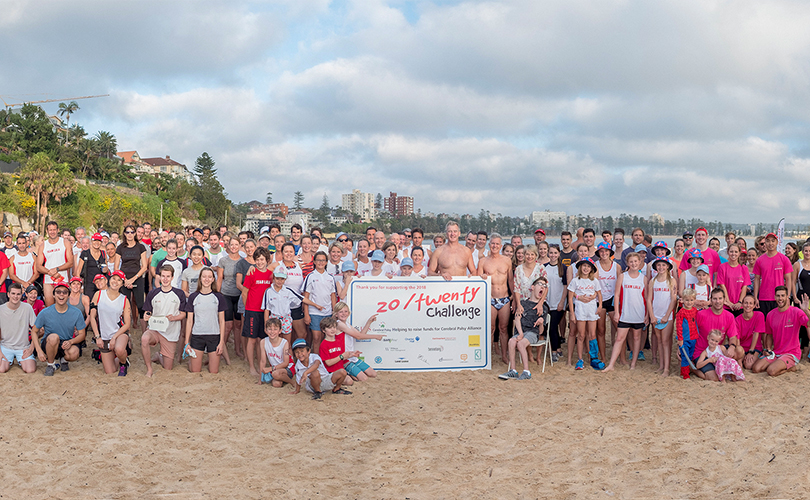2019 March Newsletter

After one of the hottest summers on record, many Australians will welcome Autumn and the opportunity to be more active outdoors and perhaps get busy in the garden. There will be no let-up in the heat on the political and economic front though, with the Budget and a Federal election looming.
The Australian economy began to show signs of slowing in February, on global concerns about the US-China trade war, Brexit and higher oil prices; and falling property prices locally. The Reserve Bank cut its forecasts for economic growth and inflation in 2019 to 3 per cent and 2 per cent respectively. RBA Governor Philip Lowe said there was no ‘strong case’ for a near term change in the cash rate from its low of 1.5 per cent.
The economic slowdown is reflected in company earnings. As the profit reporting season draws to a close, 94 per cent of companies reported a profit in the December half, but only 50 per cent increased profits on a year ago. Retail spending is also sluggish, up 0.1 per cent in the December quarter and up 3 per cent over the year. The price of unleaded petrol rose in February, from a national average of around 130.8c a litre to 136.9c last week on rising global oil prices. Brent Crude rose 8 per cent in February to more than US$66 a barrel. Consumer sentiment fluctuates; the weekly ANZ-Roy Morgan survey fell four points over the month to 114.1, still above the long-term average.
On a positive note, unemployment was steady at a 7-year low of 5 per cent in January, while the NAB business conditions survey rose from a 4-year low to +6.6 points in January. The Aussie dollar is roughly unchanged at around US71.5c.
How to keep ahead of the yield curve
 US Interest rates have been making headlines in recent months, but do they really matter to Australian investors? The short answer is they do, a lot.
US Interest rates have been making headlines in recent months, but do they really matter to Australian investors? The short answer is they do, a lot. Changes in US interest rate settings have made a big impact on investment returns from bonds and shares over the past year, while uncertainty about the future direction of interest rates is also weighing heavily on markets.
Where are rates headed?
The US Federal Reserve has increased its federal funds rate (which controls short-term interest rates) nine times from zero in 2015 to 2.5 per cent, as the US economic recovery gathered steam.As late as last December the Fed was forecasting two more hikes in 2019. Then in early January it announced a ‘patient’ approach. Respected market observer and former Pimco chief, Mohamed El-Erian now expects the next move will be a cut, but not until 2020.i
Over the same period, the Reserve Bank of Australia cut the official cash rate from 2 per cent to a record low of 1.5 per cent. Until recently, the consensus was that the next move would be up, but many economists now expect a rate cut.ii
This turnaround in sentiment in the US and Australia is due to weaker economic figures, the escalating trade war between China and the US and fears of a China slowdown. Australia also faces slow wages growth and falling property prices.
Late last year nerves got the better of investors and global shares fell sharply. Shares bounced back in January after the US Fed’s about-turn on interest rate policy. But bond markets had been predicting an economic slowdown for some time, due to something called the yield curve.
What is the yield curve?
The yield curve is a graph that plots the yields currently offered on bonds of different maturities, ranging from a few months to 30 years. The yield on a bond is the annual interest paid as a percentage of the bond price.The ‘typical’, or positive, yield curve is a gently rising line as maturities increase because investors expect a higher return for the added risk of holding an investment for lengthy periods. A flat yield curve occurs when yields on short and long securities are similar.
The relatively rare inverted yield curve, where short-term yields are higher than long-term yields, looks like a downhill slide.
Market watchers use yield curves, especially of US Treasury bonds, to test which way the economic wind is blowing. A positive yield curve is a sign of continuing economic growth, whereas an inverse yield curve implies that investors expect sluggish economic growth, low inflation and hence lower interest rates.
What is it telling us?
At present yield curves are flattening, especially in the US. While the Federal Funds rate has increased to 2.5 per cent over the past year, the yield on 10-year Treasury Bonds has fallen to 2.68 per cent as bond markets priced in an economic slowdown.iiiBy suspending further rate hikes, the Fed may have avoided further falls in long term bond yields which would have set off alarm bells in financial markets.
What does this mean for investors?
Interest rates don’t directly affect share prices, but they do affect the cost of borrowing and decisions by businesses and consumers which can flow through to corporate profits and share prices.As for bonds, as interest rates fall on new bond issues, prices rise for existing bond issues paying higher interest.
This helps explain why Australian fixed interest topped the asset class performance chart in 2018, up 4.5 per cent, while Australian shares fell 2.8 per cent.iv
Past returns are no guide to future performance; what the past does teach us is the importance of diversification. Returns from bonds and cash may not shoot the lights out but they help cushion the impact of falling share prices.
While the yield curve has proved to be a useful indicator of future economic slowdowns, it is simply a prediction based on current market sentiment and can change direction with the economic breeze.
If you would like to discuss your overall investment strategy, give us a call.
i https://www.cnbc.com/2019/02/05/mohamed-el-erian-fed-next-rate-move-more-likely-a-cut-than-a-hike.html
ii Finder, RBA cash rate survey, 4 February 2019, https://www.finder.com.au/press-release-feb-2019-rba-survey-experts-predict-cash-rate-cut-to-come-not-hike
iii Trading economic as at 28 February 2019, https://tradingeconomics.com/bonds
iv Cuffelinks, edition 291, https://mailchi.mp/cuffelinks/edition-291
Labor Government's Proposed Changes
We would like to provide you with an update on the potential changes proposed which will be legislated should the Labor Government wins the Federal election later this year. We have attempted to summarise the current situation and their potential implications.
Franking Credits
Beginning on 1st July 2019 the Labor party has proposed changes to the dividend imputation system involving the removal of refundable franking credits.
- SMSF or super funds investing directly in Australian shares may not be able to receive franking credit refunds.
- This will impact clients in pension phase the most, given excess franking credits are refunded to super funds that pay zero tax.
- Recently changes have been made to recipients of Centrelink payment, making them exempt from these changes.
- There also suggestions of capping the amount of franking credits an individual can receive, potentially resulting in less material changes.
- Exemptions to the changes:
- Recipients under the Pensioner Guarantee:
- Those under an Australian Government pension/allowance.
- SMSFs with at least 1 recipient of an Australian Government pension/allowance as at 28 March 2018.
- ATO endorsed income tax exempt charities.
- Not-for-profit institutions (e.g. universities) with deductible gift recipient (DGR) status.
Negative Gearing
A proposal to reduce negative gearing benefits.
- Negative gearing will only be limited to new properties only, with the effective date to be determined.
- Losses from property or investments can only be used to offset gains from property or other investments but not salary income.
- As the Labor party is taking a ‘grandfather’ position, any investments made prior to these changes will continue to receive the benefits of negative gearing.
- These proposed changes would hurt existing investors who are looking to sell, as asset prices re-adjust under the scenario of zero negative gearing benefits.
Capital Gains Tax Discount
A proposal has been made to halve the capital gains tax discount from 50% to 25%, effective date to be determined after election.
- Owners will need to pay more tax on their investments even if it is held by more than 12 months.
- Investments made before this date and investments made by superannuation funds will be exempt to these changes. I.e. superannuation funds will still receive a concessional 10% tax as discounted capital gains tax.
Non-Concessional Contribution Cap
There has been a proposal to lower the non-concessional contributions cap from $100,000 to $75,000.
- This will limit the amount individuals can save in their super accounts.
Income Tax
A proposal to raise certain taxes for higher income groups.
- A 0.5% increase in Medicare Levy for individuals earning more than $87,000.
- Re-introduction of 2% Deficit Repair Levy for individuals earning more than $180,000.
It is important to note that these changes will require Labor winning the next election and also pass through both the upper and lower house.
Should you have any questions or would like to discuss any aspects of this newsletter, please feel free to contact our office.
20/Twenty Challenge - Support our Team
Diamond Blue Financial Services has been raising funds for Cerebral Palsy Alliance through 20/twenty Challenge for more than 15 years (founded by Ross Ellice-Flint and James Hodgkinson).
Each year we have worked towards achieving our targeted raising ($8,000 per annum) before we embark on the major fundraising event called the 20/Twenty challenge. The Challenge involves teams to complete a 2km swim, 15km walk, 5km run and a 3km kayak and raise funds. Our dedicated team called the "Need for Speed" is up for the challenge again this year and is extremely motivated to help children with Cerebral Palsy.
Cerebral Palsy is the most common physical disability in childhood. The severity of cerebral palsy differs from child to child but almost all children with cerebral palsy need some form of equipment. Sadly some of these children will wait up to 18 months to receive it. The 20/Twenty challenge raises funds to provide specialised equipment in a timely manner for children with C.P. As an example, a powered wheelchair with customised seating can cost in excess of $30,000. Please join us in this amazing adventure and help reduce the physical and mental strain on families and children with cerebral palsy. Your support creates brighter futures for these children and their families.
Any donation would be greatly appreciated and can be made following the link below:
Click here to sponsor our team
Please note this information is of a general nature only and has been provided without taking account of your objectives, financial situation or needs. Because of this, we recommend you consider, with or without the assistance of a financial advisor, whether the information is appropriate in light of your particular needs and circumstances.
Copyright in the information contained in this site subsists under the Copyright Act 1968 (Cth) and, through international treaties, the laws of many other countries. It is owned by EFDB Pty Ltd unless otherwise stated. All rights reserved. You may download a single copy of this document and, where necessary for its use as a reference, make a single hard copy. Except as permitted under the Copyright Act 1968 (Cth) or other applicable laws, no part of this publication may be otherwise reproduced, adapted, performed in public or transmitted in any form by any process without the specific written consent of EFDB Pty Ltd.
EFDB Pty Ltd | Sydney CBD | Northern Beaches | ABN 64 112 871 922 | AFSL 311720
Categories
- Blogs (51)
- Budget (19)
- Community and Sponsorships (5)
- Cyber Security (3)
- Economic / Topical (36)
- End of Financial Year (8)
- Estate Planning (4)
- Foreign Exchange (1)
- Gifting (2)
- Health (16)
- Insurances (18)
- Investments (29)
- Lifestyle (41)
- Newsletters (55)
- Retirement (19)
- Share Buyback (1)
- Superannuation (27)
Recent Posts
Archives
- November 2022 (1)
- May 2022 (1)
- April 2022 (1)
- February 2022 (1)
- December 2021 (1)
- November 2021 (1)
- September 2021 (1)
- June 2021 (1)
- May 2021 (1)
- April 2021 (1)
- March 2021 (1)
- February 2021 (1)
- January 2021 (1)
- December 2020 (1)
- October 2020 (1)
- September 2020 (1)
- August 2020 (1)
- July 2020 (1)
- June 2020 (1)
- May 2020 (1)



